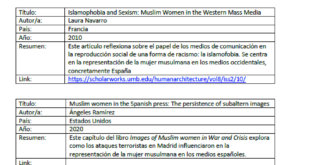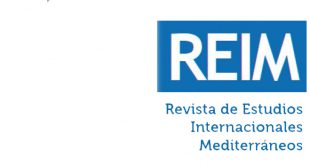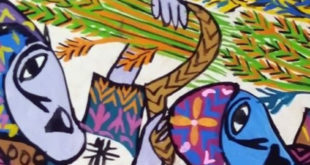The 25th of June saw the launch of ‘Islam, Muslims and journalism‘, the first guide aimed at journalists at European level which is designed to assist them regarding news coverage related to Muslim communities. The launch took place online and was presented by the journalist and ONDA member Houssien El Ourriachi, with the participation of Ricardo Gutiérrez (Secretary General of the European Federation of Journalists) and Pedro Rojo (chairperson of the Fundación Al Fanar), who were accompanied by Chafika Attalai, head of international relations at the Collectif Contre l’Islamophobie en France (CCIF).
 During the event, Pedro Rojo highlighted the growing Islamophobia detected by the Observatorio de la Islamofobia en los Medios and which led to the creation of the guide. He also highlighted the collaborative work behind the production of the guide, which involved civil society organisations (Al Fanar, CCIB and MDI), and journalist organisations (EFJ, the largest journalist organisation in Europe with a presence in 45 countries, and the NOOR Foundation, a photographer’s cooperative), but also institutional support (IEMed and OBERAXE-Ministry of Inclusion, Social Security and Migration in Spain). Ricardo Gutiérrez addressed the situation in Belgium, discussing the mutual distrust between Muslims and the media, the limited coverage of the Muslim community in the press and how important it is that the people who make up that community are given a voice. Regarding the situation in France, Chafika Attalai noted that since 2015 there has been a change as regards the use of particular terms, which has led to a level of stigmatisation that would previously have been unacceptable, and which only serves to isolate Muslim communities. He referred to recurring themes in the press, such as that “there is an internal enemy in France”, which spread the belief that there is a problem with the Muslim community and with aspects which distinguish sections of that community (head coverings, beards, etc.). The latter items have been converted by the media into ‘symbols of radicalisation’ within a secularist context where these matters are little understood.
During the event, Pedro Rojo highlighted the growing Islamophobia detected by the Observatorio de la Islamofobia en los Medios and which led to the creation of the guide. He also highlighted the collaborative work behind the production of the guide, which involved civil society organisations (Al Fanar, CCIB and MDI), and journalist organisations (EFJ, the largest journalist organisation in Europe with a presence in 45 countries, and the NOOR Foundation, a photographer’s cooperative), but also institutional support (IEMed and OBERAXE-Ministry of Inclusion, Social Security and Migration in Spain). Ricardo Gutiérrez addressed the situation in Belgium, discussing the mutual distrust between Muslims and the media, the limited coverage of the Muslim community in the press and how important it is that the people who make up that community are given a voice. Regarding the situation in France, Chafika Attalai noted that since 2015 there has been a change as regards the use of particular terms, which has led to a level of stigmatisation that would previously have been unacceptable, and which only serves to isolate Muslim communities. He referred to recurring themes in the press, such as that “there is an internal enemy in France”, which spread the belief that there is a problem with the Muslim community and with aspects which distinguish sections of that community (head coverings, beards, etc.). The latter items have been converted by the media into ‘symbols of radicalisation’ within a secularist context where these matters are little understood.
Regarding steps to be taken to improve this situation, Ricardo Gutiérrez highlighted the need for greater diversity, both in editorial content and in the newsrooms themselves. “The main challenge involves recognising the lack of diversity and taking concrete measures to remedy it,” he said. “There is a new generation of journalists who can have a significant positive impact as regards the way the media works; it is possible to work in a way which is more open and more diverse, if the newsrooms are also more open and more diverse”. For Chafika Attalai, who believes that the words used in relation to Islam have led to it being trivialised, “the main area where culture and the media need to improve relates to words and their use.” “The journalist’s tools are words, concepts, the message, language, and these need to be treated with care,” added Pedro Rojo, who reiterated that the guide aims to “re-establish the values of good journalism.” Attalai also stressed the importance of encouraging interaction among experts when speaking of Islamophobia in the media. Many people in France deny that the latter is an issue, and so the first step to improving the situation involves recognising its existence. In his opinion, a sign of progress in this area will be when Muslims are invited on to the media not only to talk about their religion but also simply as a citizen.
‘Islam, Muslims and journalism’, available in both Spanish and English, is an initiative of the Fundación Al Fanar. It has been co-financed by the IEMed within the framework of the Observatorio de la Islamofobia en los Medios project, and by the European Union’s Rights, Equality and Citizenship Programme 2014-2020, within the Stop-Islamophobia project.
 Observatorio Islamofobia Por un periodismo inclusivo frente a la islamofobia
Observatorio Islamofobia Por un periodismo inclusivo frente a la islamofobia



